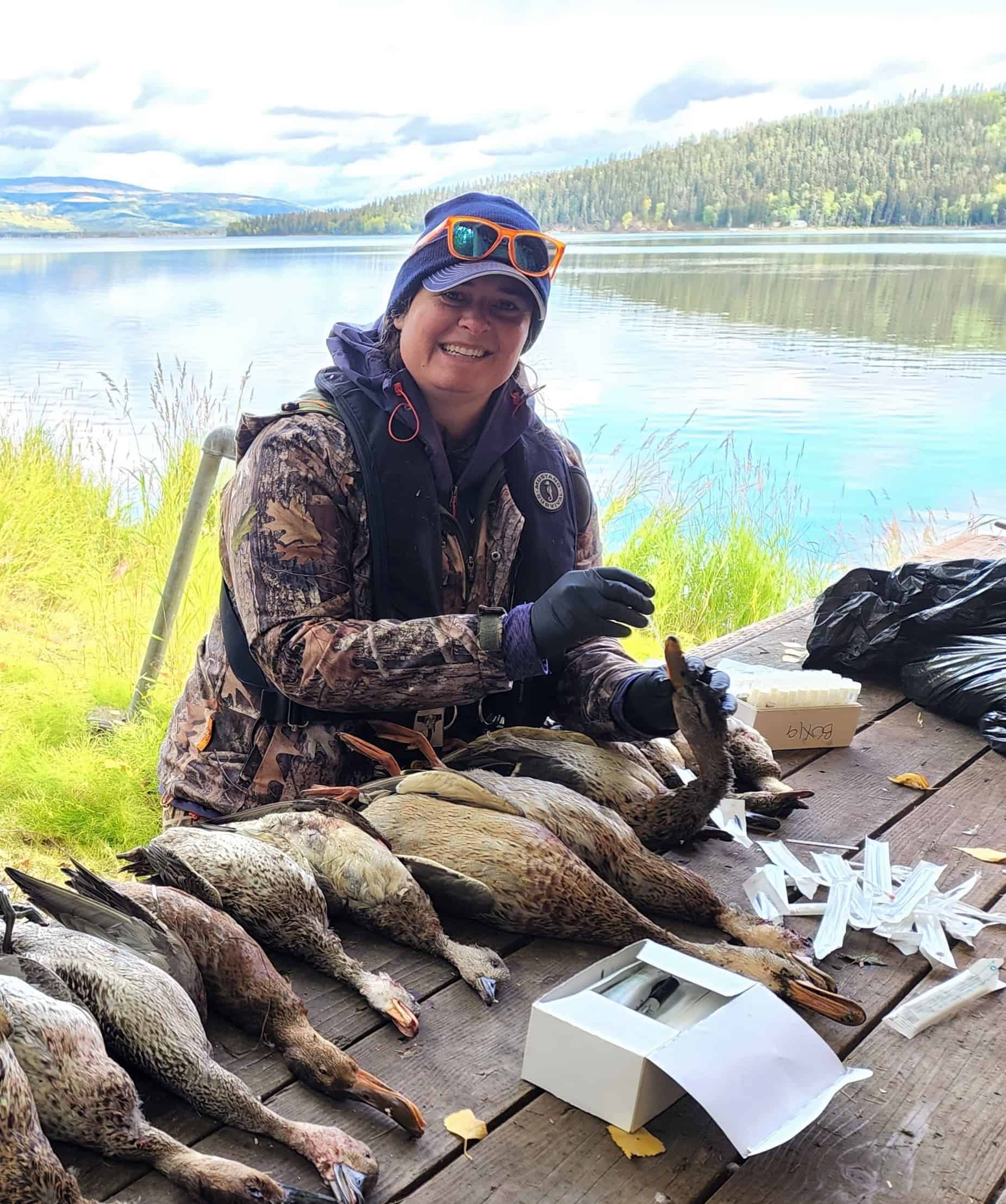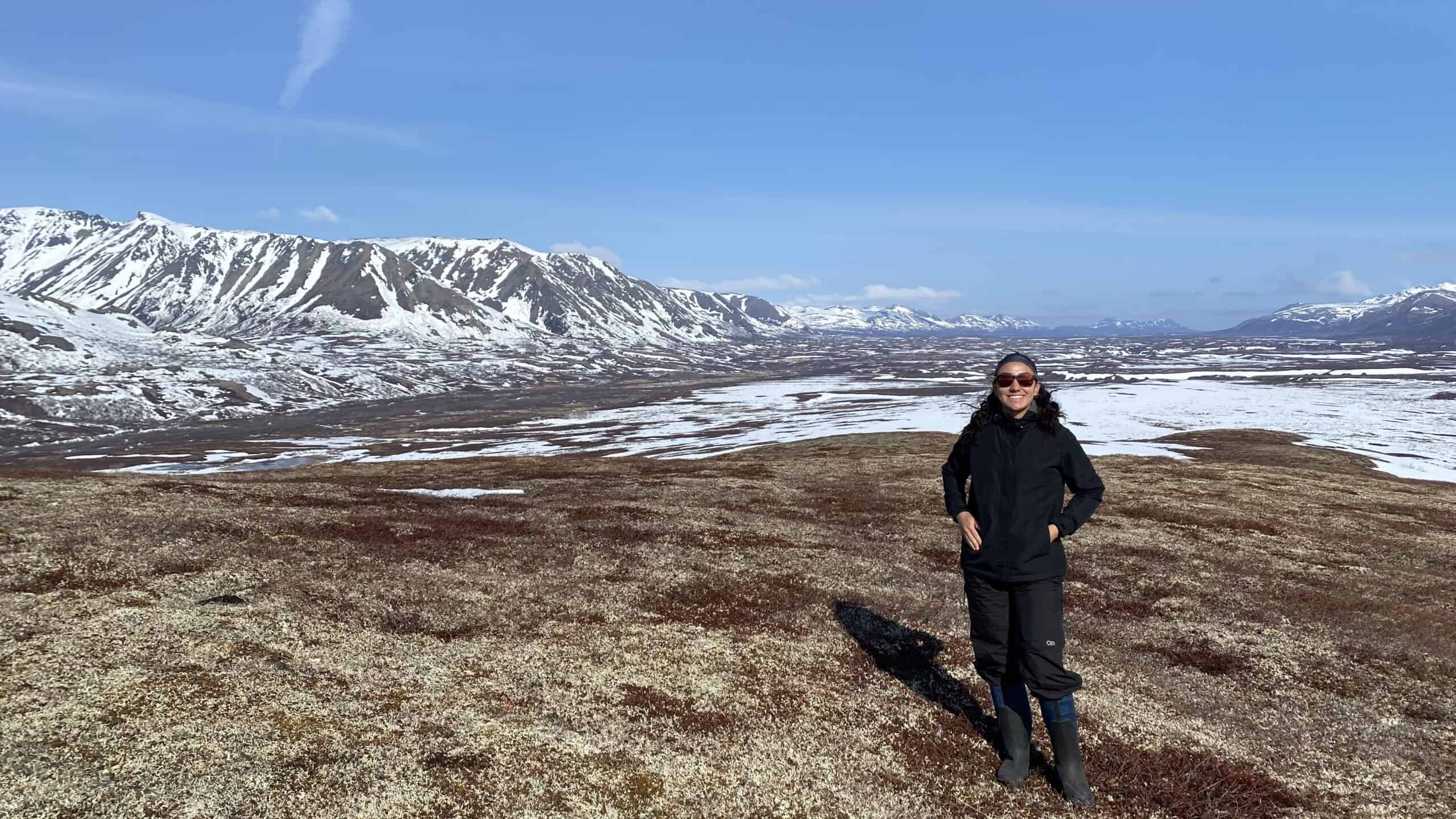Share this article
Everyone has a story
Kelly Douglass shares her experience at a Story Collider Workshop in August 2022
My story begins with a travel grant from the TWS Wildlife Damage Management Working Group.
Just kidding. Well, sort of. I did, in fact, receive a travel grant from the Wildlife Damage Management Working Group (WDMWG) last fall to attend the 2022 TWS Conference in Spokane, Washington. But the grant included an admission ticket of sorts to a select event: a Story Collider workshop hosted by The Wildlife Society’s Inclusion, Diversity, Equity and Awareness (IDEA) Working Group on Aug. 16 and 18, and sponsored in part by the WDMWG.
What is a Story Collider workshop, you ask? Good question. I had absolutely no clue, either. But since I was selected by the WDMWG to participate in the event, I was definitely going to find out. Turns out, the workshop was designed by The Story Collider, whose mission is to “reveal the vibrant role that science plays in all of our lives through the art of personal storytelling.”
So, basically, this workshop was designed to help coach and instruct science geeks, like myself, in telling our stories. Story Collider has a weekly podcast and shows all over the country. It’s pretty cool, actually. [One of my favorite stories from the Story Collider workshop was told by Aerin Jacob entitled “Lessons from the Man with a Machine Gun.” Catchy title, right? Totally grabbed my attention].
But seriously, I didn’t become a wildlife biologist to tell stories. I became a biologist to work with animals. So, how on earth could this workshop really relate to me? How could it benefit me, and by extension, the WDMWG or TWS?
Finding our stories
We’ll start at the beginning. The workshop was a two-day event (two hours each day), and the leaders took us through how to develop our stories.
Our stories? Hang on, what do you mean, our stories? I thought.
Well, the concept was completely open ended. Our stories could be about anything, as long as they were related to science. Maybe your story was about some time you felt out of place (your first day on the job, perhaps?) or a time when you took a big leap of faith (made a significant move or took a big risk). Maybe it was some time when you failed or succeeded at something (your first live-captured animal or the one that got away), or maybe a time when you stood up for yourself (asked for a promotion or sought credit for your idea). But mostly, the story was supposed to be about a defining moment of personal transformation, change or struggle.
Oh man, now I was really struggling—how am I supposed to choose a story that fits those profound criteria? I think the leaders could see the confusion and terror on our faces, because they quickly provided some example podcasts to listen to to get the general idea, and they gave us some time to think back along our wildlife careers and schooling. And, like magic, we realized very quickly that everyone has a story, even if it may seem small or insignificant at first.
Piecing together, breaking out
Our next objectives were to start piecing together our stories—very quickly, as it so happened, because we were diverted to break-out room after break-out room with complete strangers in each session and a new small task to complete each time.
For example, our first task was to give a short, one sentence synopsis of our story (with a hook, please), that we had to present to a small subset of strangers in one minute (seriously, like 60 seconds).
Then, poof! Back to the main room, where we got a second objective that would help build our stories, like staging the scene. Then, poof again! Back to another break-out room (with a new set of strangers), where we put that second component to work in two to three minutes. Then, another task, back to break-out rooms to practice, and so on.
It was a very unnerving and exciting experience, and I can see why the leaders had us rushing (so we would think on our feet, and not overthink the issue at hand) and speaking to a subset of folks (so we weren’t super nervous in front of a big group) that were new to us (to help us get comfortable with telling our stories to strangers), and then giving us a break to summarize our efforts before giving us another small task (to help us work through the story piece by piece, and not get overwhelmed). It really was a rather ingenious way to make a bunch of scientists (chronic overthinkers, right?) work through the process effectively.
Shaping our stories
Miraculously, on the second day of the workshop, our stories were really starting to come into focus and, in some cases, really bloom. We kept practicing our new skills and developing our stories so they could be told. And the best part was, we were given the tools to shape the stories ourselves. We could start with the right base material, whittle down the fluff, carve in the right grooves and paint the clearest picture possible.
But you’re probably still wondering where this is all going, right? Well, the main idea of the IDEA Working Group (see what I did there?) in hosting this workshop was to have a larger in-person storytelling event at the TWS Conference in Spokane and to have the selected storytellers get some training in the art of storytelling. Yes, that event did happen (quite successfully, I’d say) and no, you don’t get to hear my story here today (you’ll have to catch me at a TWS function in the future!).
I would, however, like to share what I learned from my experience (how this whole thing benefited me) and then share a few tips and tricks I learned from Story Collider that hopefully will help you tell your story someday (how this may benefit the WDMWG and TWS in the future).
First, I learned that every wildlife biologist has a story to tell. And that it is important to tell those stories. Second, I learned that “stories are more understandable, more believable, and more memorable than many other forms of communication.” And third, I learned that we are all—wildlife biologist or not—connected by science in some way. Finally, I learned that storytelling can be a very powerful tool to engage the public in science, make our fields of interest (our research, our purpose, etc.) more relatable, understandable, interesting, and ultimately, more supportable.
Tools from the workshop
Here are some tools (borrowed from one of our worksheets) you can use to polish your story:
- Start at the beginning. Pick out a moment you remember vividly; a moment in time from your story where everything is clear, a defining moment of personal transformation, change or struggle. Imagine yourself back there.
- Where are you at this moment? Why are you there? What happens? What changes? Where are you at the end?
- Set the stage and scene. List as much detail about that moment as you can remember.
- What do you see? (People, objects, colors, the room, the outdoors, etc.)
- What do you hear? (Was someone talking to you? Was there a background noise?)
- What do you smell/taste? (Was it indoors? What did it smell like there? Was it outdoors? What did the air taste like?)
- What do you feel on your body? (What did the air feel like? What was in your pocket? Were you wearing a heavy pack? Were you sweaty? Did you have goose bumps?)
- What were you thinking? (What was your inner monologue? What questions did you have in that moment? Who were you thinking about?)
- What were you feeling? (Were you sad, happy, angry, confused? What were your hopes or wishes in the moment?)
- Carry the audience with you.
- Weave a thread through your story—a bit shared at the beginning that you circle back to at the end.
- Use sensory language—feeling, seeing, hearing, tasting, smelling, thinking, etc.
- Build some tension. Remember the consequences, the stakes, the risk, the uncomfortable or excitable feeling. Pinpoint your pivotal moment.
- Earn the audience’s attention, and keep it through the beginning, middle and end.
- Don’t rush it. Take your time. And memorize your opening and closing sentences.
So, to all WDMWG members: Thank you for the opportunity to participate in the Story Collider workshop and for your financial support in attending the 2022 TWS Conference. I am very grateful for the tools I learned to better develop my own personal wildlife story, and more importantly, for the opportunity to share those with you, so hopefully you tell your story one day too.
Kelly Douglass is the Wildlife Disease Biologist for USDA APHIS Wildlife Services North Carolina and a member of the Wildlife Damage Management Working Group. She’s a Certified Wildlife Biologist®, TWS Fellow, and the current president of the Southeastern Section of The Wildlife Society.
Header Image: Kelly Douglass collects oropharyngeal and cloacal swabs from hunter-harvested ducks for avian influenza surveillance in Alaska. Credit: Lauren Abrahamsen








